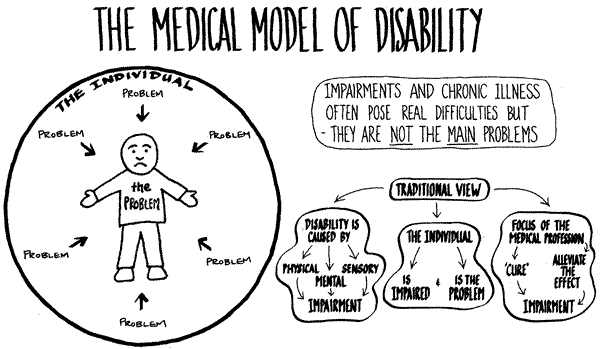Nov
2015
Using technology to achieve inclusive learning
Traditional instructional design is aimed at designing curriculum and course materials to help the average student learn. As more cognitive learning research emerges everyday showing us that the “average student” does not exist, the goals of instructional design need to shift. Not only that, but the traditional instructional design model that attempts to adapt students to the rigid confines of the classroom is based on certain assumptions about the nature of disability that may not be entirely accurate.

Source: https://assistivetechnologytidbits.wikispaces.com/About+UDL%5B/caption%5D
To explain this, it is useful to take a look at the two dominant models with which people view disability. The first is the medical model of disability, which holds that there is something intrinsically wrong with a disabled person that keeps them from success that can sometimes be fixed via medical techniques. Traditional instructional design holds that disabled students must be adapted to the classroom in order to learn, or kept entirely separate from the other. In the past, education of the disabled has been dominated by separate learning from neurotypical students so that the disabled students will not be a “distraction” to the other students. Within this framework is a fundamentally ableist view that disabled students are not capable of the same caliber of work as non-disabled students and that their presence in the classroom is a nuisance rather than a fundamental right.
Another prominent model of disability is the social model, which says that disabled people are far more disabled by the barriers put up by society than they are by their disability. Many adherents to the social model believe that with proper accommodations and a shift in the way we think about society and productivity, most of the negative aspects of being disabled could be eliminated.
[caption id="attachment_67" align="aligncenter" width="600"] Many disabled people have rejected this model. (From the Taxi Driver Training, Democracy, Disability and Society Group, UK)
Many disabled people have rejected this model. (From the Taxi Driver Training, Democracy, Disability and Society Group, UK)
The social model of disability sees disabilities as normal aspects of life, not medical problems requiring “treatment,” with the real problems coming from inaccessibility and ignorance of disabled people. (From the Taxi Driver Training — Democracy, Disability and Society Group, UK). Source: The Social vs. Medical Model of Disability, Communities Will Be Forced to Choose
One extension of the social to the arena of education has been Universal Design for Learning, or UDL, movement. The basic premise of UDL is that it is possible and desirable to design learning experiences such that it works across a wide variety of learners and abilities. The UDL movement is focused on making sure that students who have been marginalized, including disabled students, have the opportunity to learn. It achieves this by completely reframing the way we think about learning.
UDL has three basic guiding principles:
- Provide multiple representations of concepts by providing options for perception; language, mathematical expressions, and symbols; and comprehension. There is no universal way to present information such that everyone understands so it is best to provide many different demonstrations of learning.
- Provide for multiple means of action or expression during the learning process by providing options for physical action, expression and communication, and executive functions.
- Provide for multiple means of engagement by providing options for recruiting interest, sustaining effort and persistence, and self-regulation.
When designing courses, instructors use the three guiding principles and consider the components of the course, including the goals, materials, teaching methods, and means of assessment in the course. Often the best way to implement the UDL strategies is by the proper use of technology to provide meaningful learning experiences. Resources like the UDL Tech Toolkit Wiki provide examples of technology resources that instructors can use to make courses more accessible to students. Some examples include using tablets or e-readers, digital textbooks, text-to-speech applications, computer-based visual simulations, or online video mini-lectures. Technology should not be used to make things more complicated or flashy, but rather to offer more flexibility for learning. With proper implementation of UDL principles and supporting technology, not only will disabled students experience an equal opportunity at learning, but all students will have a richer, more fulfilling learning experience.